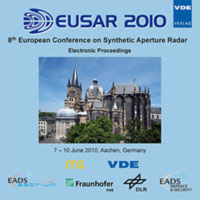SIRV based Distance for Polarimetric SAR Image Segmentation
Conference: EUSAR 2010 - 8th European Conference on Synthetic Aperture Radar
06/07/2010 - 06/10/2010 at Aachen, Germany
Proceedings: EUSAR 2010
Pages: 4Language: englishTyp: PDF
Personal VDE Members are entitled to a 10% discount on this title
Authors:
Trouvé, N.; Colin-Koeniguer, E. (ONERA, Palaiseau, DEMR, France)
Abstract:
Many texture models have been studied and applied to classification and segmentation of Polarimetric synthetic aperture radar (PolSAR) data. The Γ texture distribution leads to the classical K distributed covariance matrix, and more recently the Fisher distribution has been studied in "Bombrun, Beaulieu, Fisher Distribution for Texture Modeling of Polarimetric SAR Data" and leads to the KummerU distribution. Good results have been demonstrated using more accurate texture distribution, increasing the number of parameters used to describe the distributions. But those parameters need a large amount of samples to be estimated, increased computing time, and when used in segmentation algorithm the models cannot be used until large segments have been delineated. The segmentation is then usually very sensitive to the first steps and require strong shape constraints. The SIRV model (Spherically Invariant Random Vectors) based on the compound Gaussian model includes most texture distributions and does not require estimation of the texture parameters. That model is very convenient for PolSAR segmentation as it is much more accurate than the Gaussian model, and allows us to use the full resolution available while maintaining reduced computing times. In this paper we propose to apply the recent results on SIRV models and study their application on the segmentation of high resolution PolSAR or PolInSAR data. A SIRV based distance, adapted to any kind of texture, is proposed. Advantages are discussed and results on RAMSES PolSAR images at X-band are provided.


